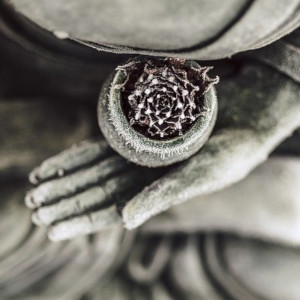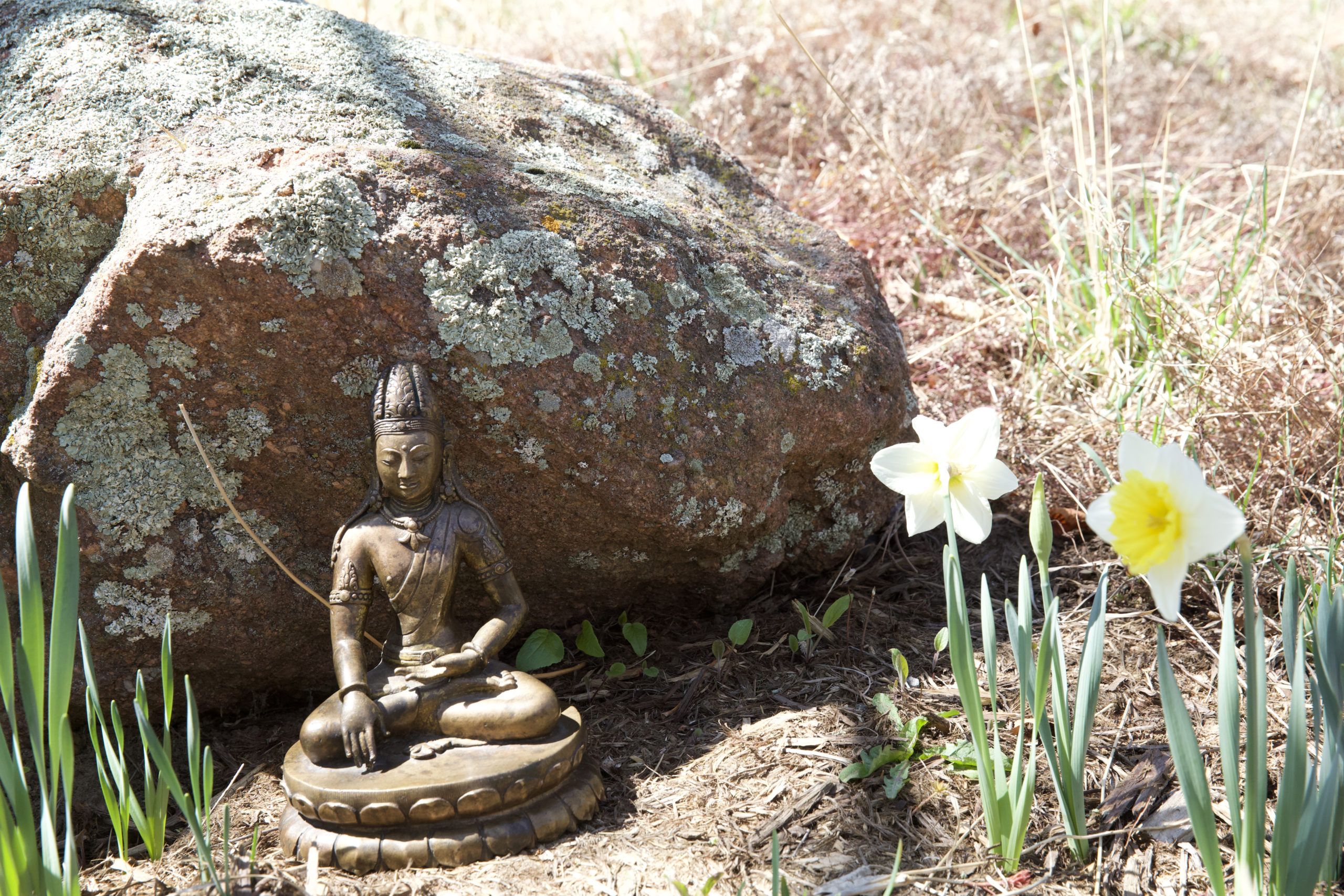WHAT IS SOMATIC MEDITATION?
When we drop beneath our thinking mind into a direct experience of our body, we find ourselves in a field of direct experience, awakened intuition, and unconditional awareness.
INTRODUCTION
Meditation is the simple yet profound practice of awakening to our most fundamental self. At this very moment, we have within us a fundamental state of being that is empty, open, and free. And yet, at present we cannot see it because it is covered over by all kinds of habitual tendencies and obscurations. Through the practice of meditation, we are gradually able to let go of these — burning away the extraneous and leaving exposed the brilliant, awakened state, which is what we really are. Opened by this process, we are able to engage our lives with tremendous clarity and warmth, so that we see and appreciate this sacred world and are able to love others in a way that is truly selfless. The process of meditation initially gives us back our lives and our deepest selves, and ultimately opens our hearts to the entire universe.
Mindfulness of the body is the foundation of the meditative journey. It puts us in direct touch with who we actually are and the actual person, ourselves, who is going to make the spiritual journey. By bringing our awareness into the body and using the breath as a vehicle for exploration, we begin to awaken to our immediate, naked, non-conceptual human experience. We find ourselves discovering the amazing color and dynamism of our own inner life, our constantly flowing thoughts, the endless world of our sensations, our feelings and emotions that rise and fall like great ground swells in the ocean, and the infinite space and peace of our own fundamental awareness. As we become more familiar with ourselves in this way, we can begin to relax into this natural process and develop a deep and abiding appreciation for all the aspects of ourselves, others, and the world.

Basic Awareness of the Body
Somatic meditation takes our body as the fundamental arena of meditation practice. Rather than trying to develop meditation through our left-brain, thinking mind in a top-down process, as is the case with most contemporary approaches, somatic meditation involves a bottom-up process, wherein we connect with the inherent, self-existing wakefulness that is already present within the body itself. In contrast to conventional approaches that emphasize entry through the intentional thinking of the conscious mind and following conceptual instructional templates, somatic meditation develops a meditative consciousness that is accessed through the feelings, sensations, somatic intuition, and felt sense of the body itself.
The body has an immediate, intuitive awareness of the totality; in fact, it is the seat of our human intuition. We are simply trying to tune into that basic, intuitive awareness of the body. Put in Buddhist terms, the human body, as such, is already and always abiding in the meditative state, the domain of awakening. It is possible for us to step into that.
Lasting Transformation
This bottom-up somatic approach to the meditative process throws into bold relief the way in which conventional, top-down approaches are too often little more than mental projections—in Trungpa Rinpoche’s language, mental gymnastics. In the direct, non-conceptual, intuitive approach of Somatic Meditation, the practitioner is able to meet his or her own experience in a direct, naked, and totally accessible way. Importantly, it is only this kind of unmediated experience that brings about lasting transformation. In Somatic Meditation, then, we realize that the ultimate meditative state is not found outside, above, or in some other place; it is discovered as the most essential and profound reality of this very human body of ours, just waiting for us to awaken to it.


The Ground
We can look at somatic meditation in a more systematic way as the ground of our practice, the path of our journey, and the fruition we aspire to attain. To begin with, the body is the ground or foundation of our meditation because the non-dual awareness that is our most fundamental nature is seated in and pervades the body. To be clear, the body as we speak of it includes the right brain, the right amygdala and corpus collosum, brain stem, then lower down the throat, heart, and gut which are primarily centers of knowing, all the way down to our cells, each of which has its own awareness. This is a realm of total, unbiased, intuitive awareness—hence its status as the Buddha Nature itself. All of our direct experience, which is what awareness knows and what we work on in meditation, arises in the body.
The Body is the Path
Our body also provides the path of our practice. All the somatic meditation instructions we receive and practices we carry out are always further developments and refinements of our spiritual process, toward the deeper, more subtle, more authentic, and more complete embodiment of full realization. The body is also the path in another way. When we meditate, our actual path of spiritual unfolding arises out of what we experience, what comes up out of our body, what we have to work through to continue to open. And, further, the body orchestrates that process. So, the body is the buddha nature here, too; within its darkness, it holds what we are working toward—the true person that we are called to be—and it leads us inexorably toward that fruition. Finally, on the path, the body is our protector. When we feel uncertain or lost in our practice, we are able to check what is going on with us against our somatic experience. We ask our body for guidance. When I teach that, in the end, we all have to be our own meditation instructor, this is how we do it; we check whatever we are doing against our interior, somatic knowing – available after we develop it –, to see if it feels right and to try to sense what is next.


Trikaya
Finally we can look to our body as the fruition of our meditation practice. Through the practice of somatic meditation, we gradually uncover the basic reality that is our body, which is completely different from the entity we have previously been thinking of as our body. In this unfolding, stunning discovery, we find that, ultimately, our very own body is nothing other than the trikaya, or three bodies of enlightenment, the three bodies of the Buddha. That this human body of ours, like everything else that is, is nothing other than an expression of the sacredness of the universe, whole, perfect and free.
What is quite amazing is that this understanding is not theoretical, nor does it come through our thinking mind. Rather, it is a matter of our own direct, fully embodied, personal experience. Here there gradually dawns in us the experience that the fundamental nature of our body is empty, open awareness (dharmakaya); that this awareness is brimming with implicit, compassionate energy, the life force (sambhogakaya), that is constantly being born from the basic space; and that what is coming to birth is our own life, our love of Life, and our love for others – in every situation, emotion, encounter, and detail (nirmanakaya).
Wholeness
In somatic meditation, then, the body is the ground, the path, and the fruition of our practice. By contrast, the left brain—the seat of our thinking mind and of our conceptualizing ego consciousness—has no direct involvement in the meditative experience. At the same time, it does have several important functions to perform in our spiritual journey; but in order to carry these out, the ego needs to operate as a support, a handmaiden, so to speak, of our basic Soma, of the awakened state within. It has to accept second place in the hierarchy of body and thinking mind. Then, our thinking mind can help. It provides a way for us to sort out and conceptually understand what arises in our sitting. In its executive function, it helps us to translate the sometimes amorphous inspiration of our Soma into concrete and practical goals, action items, and plans. It assists us in arriving at a self-understanding in which our spiritual life and our meditation practice stand at the center. And it is the means by which we are able to bring the expansiveness, warmth, and joy of our meditation into our daily life and integrate it with our everyday person, and to create healthy (as opposed to dysfunctional) and compassionate patterns in all aspects of our life. In the end, our left-brain thinking mind makes a transition from the endless self-serving narratives of our disconnected ego toward a story of who we are that is rooted in our basic nature and our actual life, with all of its unfolding and open-ended possibilities. Our left brain, as the handmaiden of our journey, helps us arrive at a story that is true, that is without end, and that is truly us. As we say, “we were born to love; end of story.” Somatic Meditation is the path. Realize this most fundamental purpose of our human existence.


